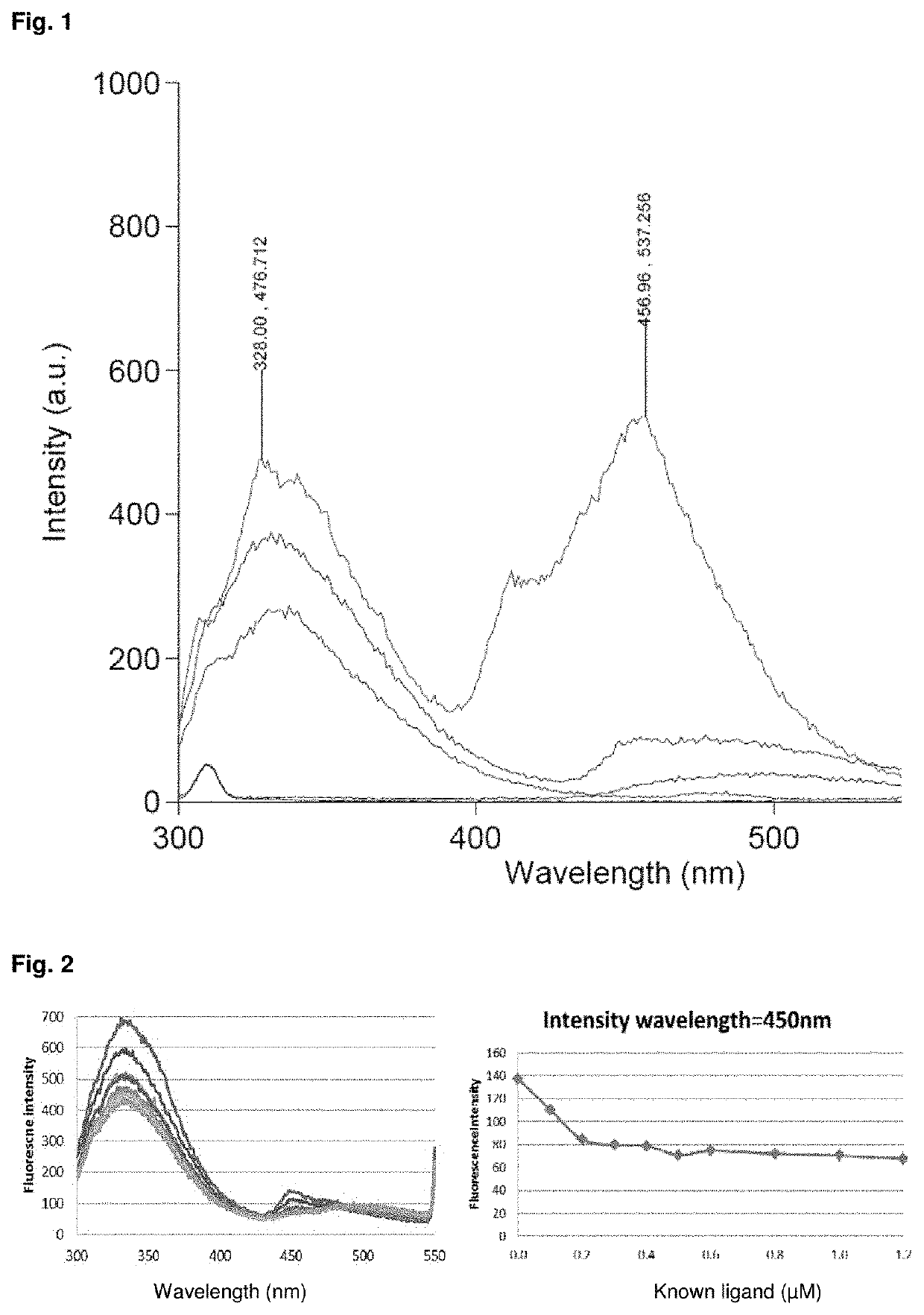Detection method and kit
a detection method and kit technology, applied in the field of detection methods and kits, can solve the problems of complex use, relatively expensive, and time-consuming cell culturing techniques, and achieve the effect of cumbersome technology
- Summary
- Abstract
- Description
- Claims
- Application Information
AI Technical Summary
Benefits of technology
Problems solved by technology
Method used
Image
Examples
Embodiment Construction
[0029]The inventors expressed the encoding gene sequence for the AhR2 from zebrafish in Escherichia coli cells to produce the high yield of a 600 amino acid recombinant protein. The protein was purified by using Histidine tag affinity column. The protocol used allowed to obtain a good yield of pure protein that is correctly folded.
[0030]The inventors developed an assay for the Aryl Hydrocarbon Receptor binding activity as an alternative to known methods and investigated which molecules are the most suitable for building a competitive binding assay as in vitro ligands, and to make these molecules fluorescent or more fluorescent. The inventors found that ethyl 5,11-dihydroindolo[3,2-b]carbazole-6-carboxylate is a high fluorescence emittant in hydrophobic organic solvent (FIG. 1, top line at 328 nm) when excited at 280 nm, showing emission peaks at 328 and 456 nm. The same concentration of ethyl 5,11-dihydroindolo[3,2-b]carbazole-6-carboxylate in aqueous buffer environment has a very l...
PUM
| Property | Measurement | Unit |
|---|---|---|
| wave length | aaaaa | aaaaa |
| fluorescence spectroscopy | aaaaa | aaaaa |
| emission peak intensity | aaaaa | aaaaa |
Abstract
Description
Claims
Application Information
 Login to View More
Login to View More - R&D
- Intellectual Property
- Life Sciences
- Materials
- Tech Scout
- Unparalleled Data Quality
- Higher Quality Content
- 60% Fewer Hallucinations
Browse by: Latest US Patents, China's latest patents, Technical Efficacy Thesaurus, Application Domain, Technology Topic, Popular Technical Reports.
© 2025 PatSnap. All rights reserved.Legal|Privacy policy|Modern Slavery Act Transparency Statement|Sitemap|About US| Contact US: help@patsnap.com

